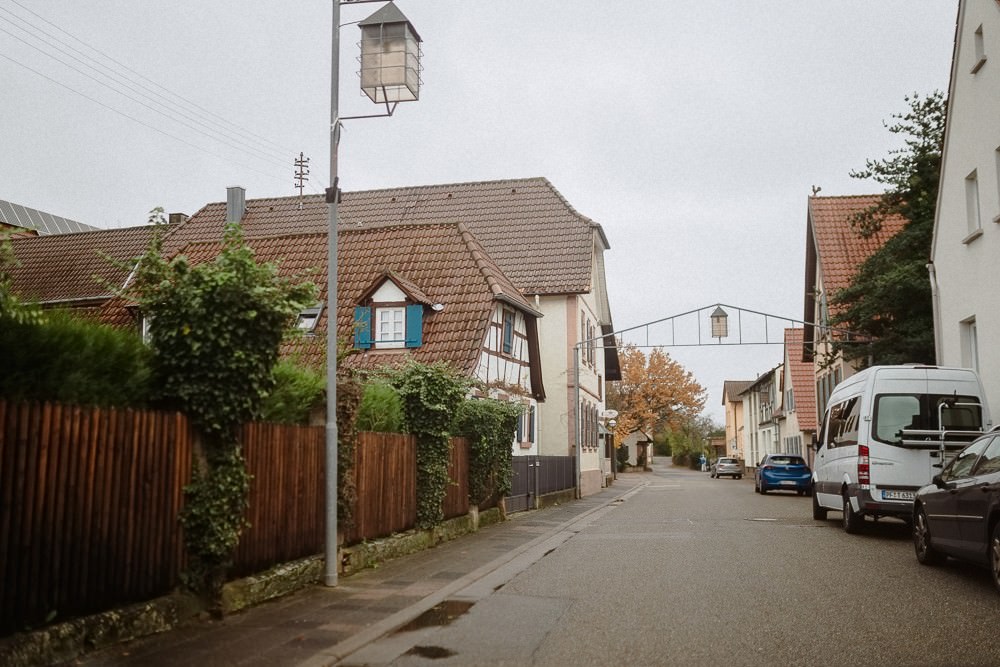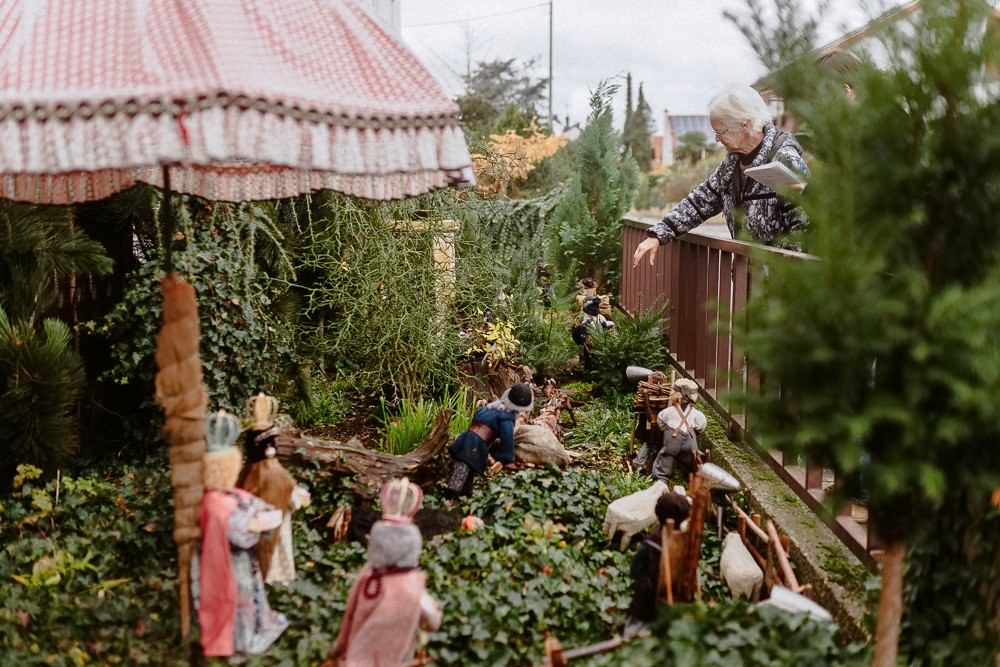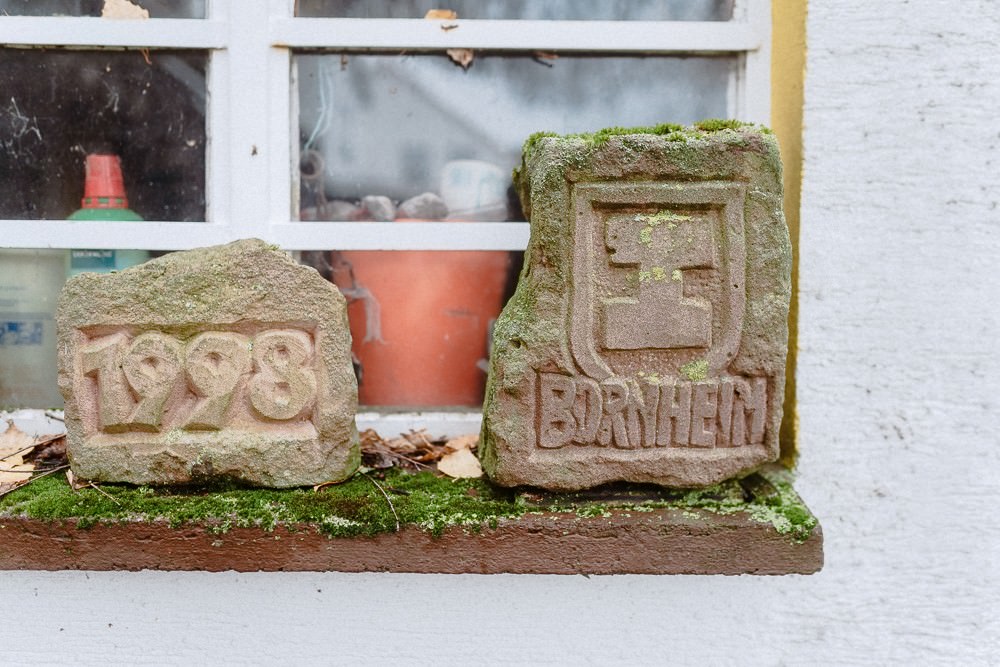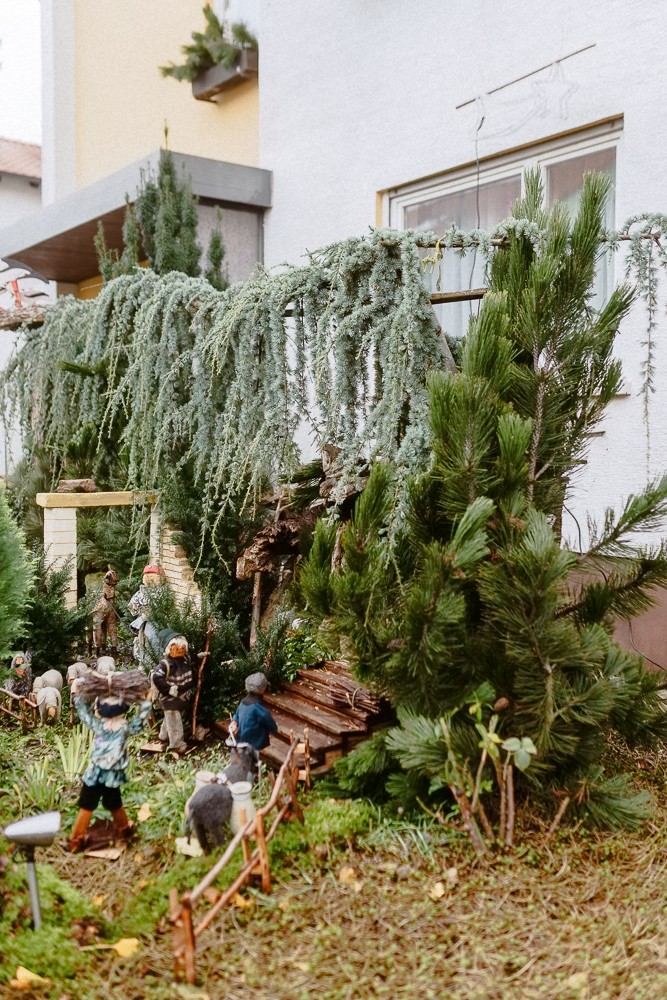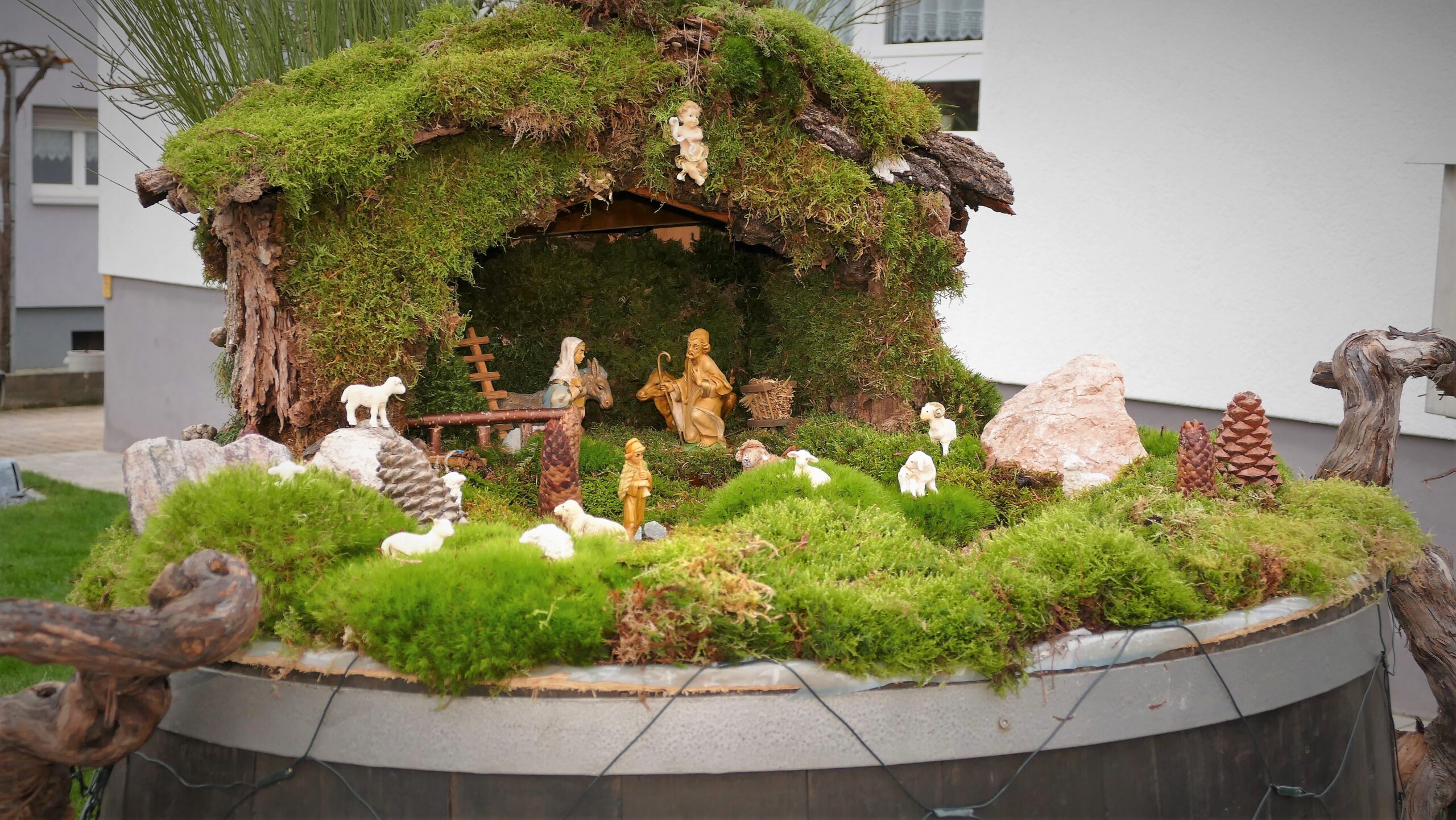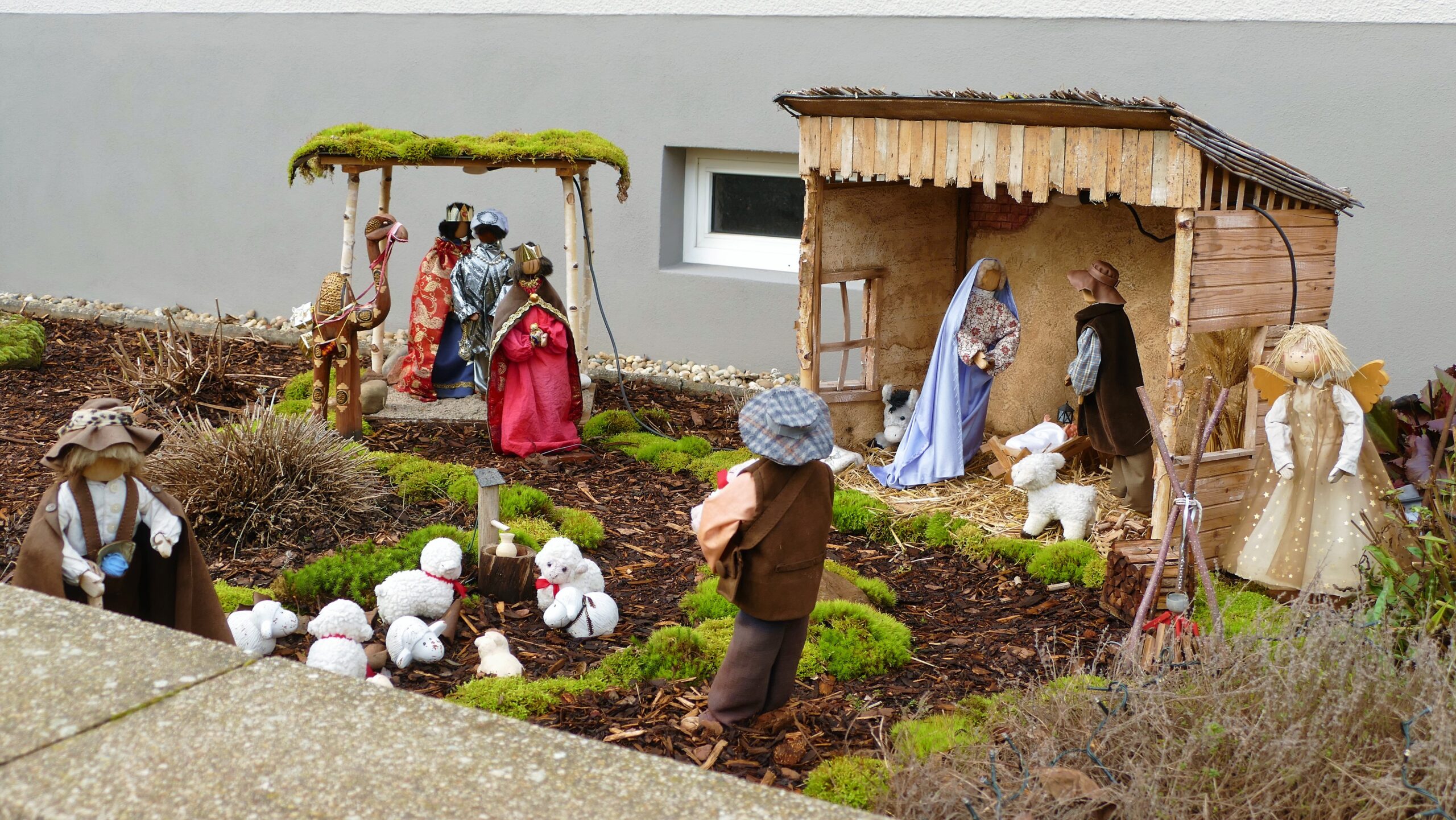Mary, Joseph, Jesus and, of course, a stable. More than a hundred different variations of this scene can be seen on the streets of Bornheim every year. A large number of mangers adorn the streets of the small town near Landau during the Christmas season—from the traditional model made of wood and moss to the modern interpretation made of jelly bears. Ulla Kaub started this tradition in 2003. Today, visitors come from all over the region to see the various depictionsof the nativity scene in Bornheim.
Ulla Kaub becomes nervous. It’s barely two weeks off. “I’m late,” admits the senior with the snow-white hair as she sits somewhat sheepishly on the bench at her dining table. She has put up only one manger so far, but she plans to have five by the first weekend of Advent. That’s when the season starts in Bornheim. More than a hundred mangers will adorn the streets of the small town near Landau for as long as six weeks. Large and small ones, traditional as well as modern ones; in front gardens, on window ledges and in courtyards. “The mangers in Bornheim are unique, as far as I know,” Ulla says. There is a hint of pride in her voice, although the slender woman doesn’t like to take centre stage.

Ulla started the tradition of the Bornheim mangers in 2003 (Helmuth Bischoff wrote a book about mangers in the Palatinate – LINK). At the time, she had no idea what would become of her initiative. “I simply asked the then mayor, Dieter Hörner, if I could install a manger in the town centre.” Ulla wanted to set up a walking loop route, as a meeting place for the locals. She didn’t have a particular passion for nativity scenes at the time. But that would change in the years to come. Instead of four or five families, as she had hoped, 16 immediately got in touch and installed mangers in front of their homes. “That really surprised me,” she remembers, “because usually people don’t have time for anything anymore.”
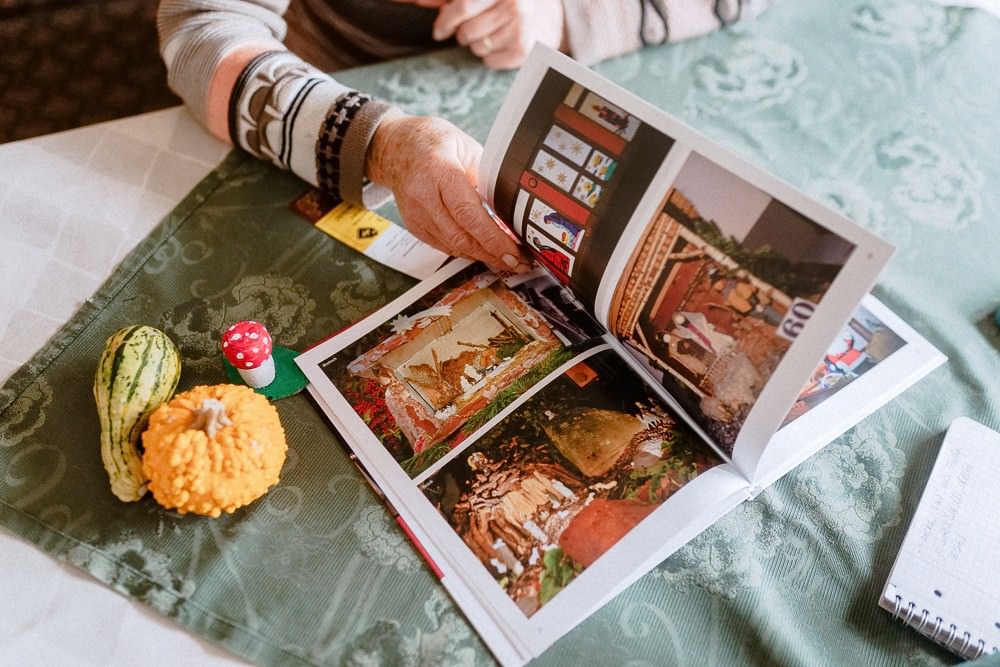
Today, visitors from all over the region come to Bornheim to see the mangers during the Christmas season—from Karlsruhe, Heidelberg and as far off as Frankfurt, Ulla knows. The Bornheim locals install more than a hundred variations of the birth of the Christ Child every year. “I don’t really want to have more than that,” the initiator admits. “The idea is that you pause and take in what you see. This isn’t possible if there are too many.” Around a third of the mangers are handmade. The locals of Bornheim come up with something new every time. There have been mangers made of corks or jelly bears, clay pots, Playmobil figures, strings and fairy lights. The library usually sticks Mary, Joseph and the baby Jesus to its windows with clay paper. Ulla also remembers a very simple version made of wooden blocks. The figures were only distinguished by lettering. “I thought that was a great idea,” she enthuses. However, she doesn’t want to emphasise any of the many works of art in particular. “All of them together are great. The more variety, the better.”
